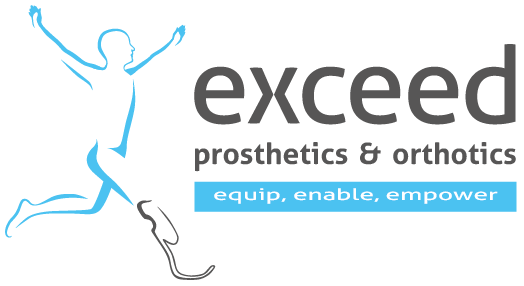Get to know P&O (Prosthetics and Orthotics)
These the simple facts you should know about P&O.
What are Professional Prosthetic and Orthotic Services?
P&O services are about mobility.
Some people have mobility problems from birth. Others can lose mobility, or have their mobility impaired, by limb loss, stroke and other conditions.
When you attend a professional P&O service:
- Your condition is assessed;
- You receive expert advice and treatment from a trained P&O professional;
- A custom-made assistive device, like a prosthetic limb or a leg brace, is made for you;
- The device is fitted and you are shown how to get the best from it;
- You will receive a high quality device that is safe to use and will do no harm;
- Your device can be maintained and repaired so that it always works well.
Why are P&O Services important?
If you don’t have mobility or lose mobility, lots of doors close.
P&O services help people gain or regain mobility, by designing, making and fitting specialist devices, like artificial limbs.
But the important point has nothing to with P&O devices, it’s about the opportunities that come with mobility. Like the opportunity to go to school, college or university; the opportunity to get a job or the opportunity to get involved in sport and other activities.
In other words, P&O services are about living life to the full.
What makes a good Prosthetic and Orthotic Professional?
Simple – training, qualifications and experience.
There are two types of Prosthetic and Orthotic (P&O) professional:
- Prosthetist Orthotist (PO) – POs are clinicians and are qualified to treat patients
- Prosthetist Orthotist Technician (POT) – POTs are trained to manufacture P&O devices; this important job enables POs to see more patients. POTs are not qualified to treat patients.
POs are usually qualified to one of two levels - Prosthetist Orthotist or Associate Prosthetist Orthotist – both are qualified to treat patients.
If you want to be sure that you’re being treated by a P&O professional, ask to see their qualifications. Qualified people will be happy to show off their certificates.
Where do P&O Professionals Train?
In Southeast Asia and Sri Lanka, where Exceed P&O works, professional Prosthetist Orthotists usually train at specialist P&O schools. There are 7 P&O schools in these areas. In Southeast Asia, only one school - in Cambodia - offers a course for Prosthetist Orthotist Technicians.
What’s the difference between a Prosthesis and Orthosis?
In simple terms:
- A prosthesis replaces a missing part of the body – for example, an artificial limb;
- An orthosis supports a weakened or damaged part of the body – e.g. a leg or spinal brace.
Are there enough P&O services?
Prosthetic and Orthotic services are in short supply. The World Health Organisation estimates that at least 80% of those who need P&O support have no access to services. In Southeast Asia, for example, this means that over 4 million people need but cannot access P&O services.
The Exceed organisation is working to increase the availability of much-needed, professional P&O services. That’s why Exceed P&O is a social enterprise – we want to use profit from business to develop the P&O sector in Southeast Asia, so that more people have access to high quality P&O services and make sure that the most disadvantaged are not left behind.
Choose Your P&O Service Carefully
Use this helpful checklist to make sure you choose a P&O service that is delivered by professionals, keeps you safe, offers choice, provides training in device use and delivers ongoing support.

